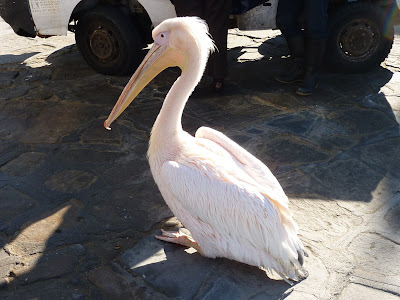 |
Looking back toward Attica; we stopped in a small resort town for a cafe that had wifi and finally got our European maps re-installed to the satnav; that was scary! |
 |
Marine farming on the north side of the Peloponnese |
 |
Islands in the Aegean |
...recounts the retirement travels of Mark and Vicki Sherouse since 2008...in Asia and the Pacific, New Zealand, Europe, South America, and Africa, as well as the US and Canada. Our website, with much practical information, is: https://sites.google.com/site/theroadgoeseveron/.Contact us at mark.sherouse@gmail.com or vsherouse@gmail.com.
 |
Looking back toward Attica; we stopped in a small resort town for a cafe that had wifi and finally got our European maps re-installed to the satnav; that was scary! |
 |
Marine farming on the north side of the Peloponnese |
 |
Islands in the Aegean |
 |
At the Marathon stadium, kilometer marker 40, the
beginning of the modern-day Marathon/Athens marathon
race |
 |
Commemorative mosaic thing
|
 |
The official starting line
|
 |
Me, demonstrating proper starting form
|
 |
Signage on the km marker
|
 |
Outside the Center for the Promotion of the
Marathon Race; last year was the 2500th
anniversary of the run--alas, like everything
else in Marathon, it was closed
|
 |
Pretty good signage
|
 |
Reconstructed battle trophy; the site, mentioned by both Plato
and Aristophanes, was found by an American archaeologist |
 |
The Tumulus, on the plain of Marathon, with a mountain back-drop
|
 |
Avast!
|
 |
View from the marina storage center, Sunday morning
|
 |
Museum entrance
|
 |
Schliemann's famous communication to the king of Greece
|
 |
The golden cups...
|
 |
Moving right along, the very famous Zeus/Poseidon (scholars
are divided) throwing a spear/trident/whatever |
 |
The Jockey
|
 |
Jumping back a little in time, the "boxers" fresco from
Akrotiri/Santorini, 16th century BCE |
 |
It took many years and much high tech to figure out what this
thing was and to reconstruct it, as above; no one was expecting a 2000 year-old computer |
 |
Interior side view of all the gears, etc.
|
 |
The Hellenistic Gaul pleading for his life
|
 |
Incredibly realistic bronze bust, showing how eyes were
represented in such things |
 |
Aphrodite and Eros fighting off Pan
|
 |
Head-smashed-in bronze
|
 |
"Never trust Athenian travel agents!" they told us on
Mykonos
|
 |
Mykonos' excellent little archaeological museum
|
 |
A "frying pan" ceramic piece--so-called because of the shape--apparently no
one knows what they were used for (we saw plenty more in Athens' museums) |
 |
Beautifully-painted pottery, 8th century BCE
|
 |
"Who's been into the wine cellars?!"
|
 |
For us, the most impressive piece was this 7th century BCE
4-foot high funerary urn, decorated with scenes from the Trojan War; hardly a century after Homer himself is supposed to have lived |
 |
Trojan horse
|
 |
Hector, Andromache, and Astyanax?
|
 |
8th century griffin
|
 |
"No thanks, I'm driving"
|
 |
Approaching Mykonos
|
 |
Typical Mykonos old town view
|
 |
Mykonos' "Little Venice"; apparently a scene from one of
the Bourne movies was shot here
|
 |
Sea camel near the old harbor
|
 |
Mykonos' signature windmills
|
 |
It's a beautiful little town with many
distinctive architectural features
|
 |
OK, polychrome it's not; and you can't tell
people you live in the white house with the
blue trim
|
 |
Sunset view
|
 |
Next morning, old harbor
|
 |
Petros, Mykonos' pelican mascot for more than 50 years;
he's completely accustomed to humans; wanders around the
harbor and fish market every day, getting hand-outs and
getting photographed
|
 |
View from our balcony
|